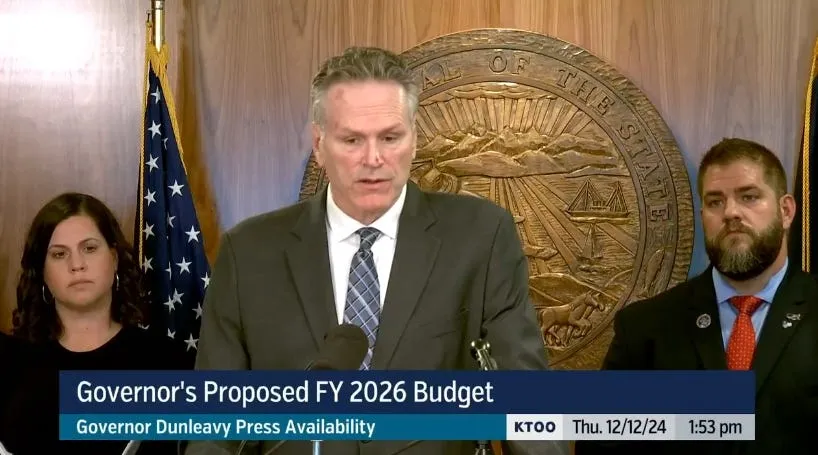Redistricting trial enters its second day with a focus on the Mat-Su-Valdez connection
It's a forced arrangement and neither are thrilled.

Good evening, Alaska!
In this edition: The Alaska Redistricting Board trial entered its second day with a focus in on the Mat-Su Borough and its pairing with Valdez (an arrangement that neither like) where we saw some of the key arguments take shape. Because of the particularly wonky approach to the trial, it’s hard to get a good read on how things are going but let’s give it a shot.
Spice level: 🫑
Legislative day: 7
Redistricting board trial, day 2

The Mat-Su plaintiffs got their turn in court today, challenging the Alaska Redistricting Board’s decision to overpopulate the region’s house districts and pair a chunk of the borough’s eastern region with Valdez. As it was on Friday, today was a sliver of an actual trial with the plaintiffs’ opening argument and direct testimony already contained in pre-filed documents (you can find the Mat-Su’s opening arguments here). The case, which was brought by the Mat-Su Borough, is closely linked with the case brought by the city of Valdez—who will get its turn tomorrow—with the shared goal of breaking the two up and redrawing maps pretty significantly.
And that made for a somewhat more trial-y trial day.
That’s because the two plaintiffs with a shared goal meant that Robin Brena, the attorney for the Valdez plaintiffs, got a chance to cross examine the Mat-Su witnesses in what was essentially a double-dip of direct testimony as he built his case that Valdez and the Mat-Su Borough shouldn’t share a House district. Borough Manager Mike Brown provided perhaps the clearest testimony about the disparities between the Mat-Su and Valdez, noting that not only did they not have shared interests, but they were frequently at odds with each other.
“What I’d say, generally speaking, is we lack a number of common interests,” he said, focusing on the ferry system that many Mat-Su area legislators (and Gov. Mike Dunleavy) have targeted for cuts in recent years, of which he later added, “It is not a top priority for the Mat-Su Borough, I suspect Valdez would see it differently.”
Socio-economic integration will be a key issue in the Mat-Su and Valdez cases because the rules for House districts is much more clearly laid out than the light-touch approach that the Alaska Constitution has for Senate districts.
All that being said, though, it’s still hard to get a clear look at the entirety of the trial or where it might be headed given today’s action is only a piece of the puzzle. We can at least clue in on the main points of contention by watching where the Alaska Redistricting Board and, in this case, the attorney for the group formed around Doyon, Limited are putting their attention during cross examination. The Doyon, Limited group intervened in the lawsuit to defend the rural Interior district as approved by the board (it would be the key target for the nearly 4,000 Valdez residents).
A common thread that carried over from the East Anchorage plaintiffs’ argument on Friday to today is whether the residents of a House district (or in the East Anchorage plaintiffs’ case, a Senate district) should be able to travel throughout the district without leaving its boundaries. That’s not the case for Valdez in the latest map. As you can see in the map below, Valdez residents would have to travel through the rural Interior district, House District 36, in order to reach the rest of the district in Mat-Su.

Brena called it an “orphaned” city during questioning with Valdez city Mayor Sharon Scheidt (who was taken out of order today because this trial really is just a jumble at this point).
But whether the drivability of a legislative district carries any weight is yet to be seen. Both the Alaska Redistricting Board and the Doyon, Limited group have argued against this, noting that it’s not specifically required in the Alaska Constitution. They also argue that the requirement for being able to drive within a district fails as soon as it’s applied to the state’s many rural districts. I can think of at least a few urban legislative districts under the last round of redistricting that would’ve failed this test. It should be kept in mind, though, that something’s not automatically constitutional if it hasn’t been challenged before.
The Mat-Su plaintiffs’ expert witness, Stephen Colligan, argued that roads and cars are applicable for urban districts and that each region’s traditional means of transportation—whether it be cars, planes or ferries—should be taken into consideration when judging contiguity of a district. He ran into some trouble on this point, though, because of his work with the GOP-leaning Alaskans for Fair and Equitable Redistricting, which proposed a legislative district that would have violated this notion of connectivity by linking Anchorage’s Hillside with a strip of the Kenai Peninsula that would’ve reached all the way into Nikiski:

The Alaska Redistricting Board and the Doyon, Limited group also brought the same argument to bear against the Mat-Su’s case that the board have improperly overpopulated the Mat-Su region districts. Here, the plaintiffs argue the region’s districts are too far above the ideal population for a district and therefore it’s watering down their voting power in the Alaska Legislature. The defenders of the plan argue, though, that there’s no clear precedent on what is acceptable and what is unacceptable when it comes to the size of a district.
The day also included a fair bit of criticism from Colligan about the board’s process. He argued that the board frittered away precious time with its individualistic approach to mapping that led to members getting dug in on specific concepts that left little time for meaningful resolution at the end of the process. They argued among themselves too much, Colligan said, instead of trying to work out an effective solution. One of the refrains we heard throughout the day was that while the process is meant to try to balance interests, was there any requests that Fairbanks, Doyon or Ahtna didn’t get? The point being that Board Chair John Binkley, a Fairbanks resident, played favoritism with how the board weighed different requests.
Whether that carries water though, is dubious.
Why it matters: With a population of nearly 4,000, finding a new home for Valdez is going to be an enormous task that would effectively require a wholesale redrawing of the maps with the biggest loser likely being the Doyon, Limited group. Doyon, Limited (and Binkley) fought hard for an Interior district that united the Alaska Native corporation’s villages after seeing them split in some pretty wonky ways in the last round of map drawing. The proposals presented today by Mat-Su and Valdez would see a major reshuffling of the Interior villages and a return of the Fairbanks-to-coast district we saw in the 2012 elections (that was later overturned).
Here’s one example:

Wade in: My full Twitter thread… and in a more readable format.
Up next: Valdez gets its turn on Tuesday at 9 a.m. Watch the trial here.
The Alaska Memo Newsletter
Join the newsletter to receive the latest updates in your inbox.




